Frequently Asked Questions
Question not answered? Feel free to contact us down below. We go above and beyond to meet the needs of our customers.
What is Mold?
Mold is a type of fungus that grows in the form of multicellular filaments called hyphae. It can grow on almost any surface, including food, plants, drywall, insulation, and other items. It can cause health problems, such as allergies and respiratory issues, and can also damage surfaces and items in your home.
What is Lead?
Lead is a heavy metal that is toxic to humans and animals. It is most commonly found in paint, pipes, and gasoline. Lead can cause serious health problems, such as brain damage, learning disabilities, and kidney damage.
What is Asbestos?
Asbestos is a naturally occurring mineral fiber that has been used in many building products for insulation and as a fire-retardant. It is known to cause serious health problems when inhaled, including lung cancer and mesothelioma. Asbestos is no longer used in most building materials, but it can still be found in some older buildings.
How do I know if my home or building has mold?
Mold can be difficult to detect because it can grow in hidden areas such as inside walls or under flooring. A professional mold inspection can detect the presence of mold in your home or building..
What are the steps involved with asbestos removal?
The process of asbestos removal typically involves a professional inspection, the development of a removal plan, the encapsulation or enclosure of the asbestos-containing materials, and the removal and disposal of the material.
Is it safe to live or work in a building during asbestos removal?
During the removal process, the area will be sealed off and air quality will be monitored to ensure that no asbestos fibers are released into the air. It is generally safe to remain in the building during the removal process.
What are the steps involved in a lead inspection?
A lead inspection typically involves a visual examination of the property, the use of a lead test kit or x-ray fluorescence (XRF) equipment, and the collection of samples for laboratory analysis.
Health hazards related to Mold?
Mold exposure can lead to health hazards, including respiratory issues, allergic reactions, and skin irritation. Mold spores can trigger symptoms such as coughing, wheezing, and nasal congestion, especially in those with allergies or asthma. Some molds produce mycotoxins, which can be harmful. Individuals with weakened immune systems may be at risk of fungal infections. Direct contact with mold can cause skin, eye, and mucous membrane irritation. Promptly addressing mold issues and addressing moisture problems is crucial to mitigate health risks. If experiencing symptoms, consult a healthcare professional.
Health hazards related to Lead?
Lead exposure poses significant health hazards, including neurological effects, anemia, kidney damage, reproductive issues, cardiovascular effects, behavioral and learning problems, and gastrointestinal issues. It is particularly harmful to the developing brains of young children. Prevention measures, such as lead abatement and safe handling of lead-containing materials, are crucial. If concerned about lead exposure, seek medical advice and testing, especially for vulnerable populations like young children. Public health initiatives are essential for reducing environmental sources of lead exposure.
Health hazards related to Asbestos?
Exposure to asbestos poses serious health hazards:
Lung Diseases: Asbestos can cause asbestosis, a lung condition leading to breathing difficulties.
Mesothelioma: Long-term exposure is a primary cause of this aggressive cancer affecting the lungs, abdomen, or heart lining.
Lung Cancer: Asbestos increases the risk, especially when combined with smoking.
Pleural Disease: Asbestos can cause inflammation and thickening of the pleura, leading to chest pain and breathing difficulties.
Prevention involves avoiding asbestos exposure and following safety guidelines during removal. If exposed, seek professional advice due to the long latency period of asbestos-related diseases.
